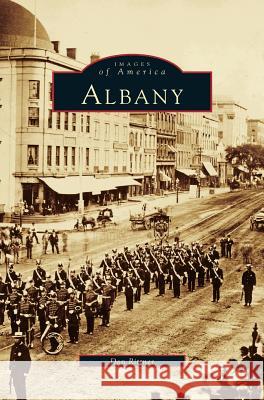Albany » książka
Albany
ISBN-13: 9781531600563 / Angielski / Twarda / 2000 / 130 str.
Surrounded by natural beauty and a rich human legacy second to none, Albany lies in the Hudson Valley about 150 miles north of New York City. First settled in 1648, the area quickly grew into one of the most important trade, transportation, and military regions in North America. Albany became the permanent state capital in 1797 and has long been a major political center, key to New York's growth and prosperity. Some of the nation's leading statesmen, scientists, and presidents have called Albany home: Martin Van Buren, Joseph Henry, Hamilton Fish, William McKinley, Theodore Roosevelt, and Franklin Roosevelt, to name a few. Albany is a photographic essay of the city's 19th- and early-20th-century history; it focuses on the architectural treasures downtown and moves on to transportation, institutions, and disasters. Albany is also more than that: it is a field guide, challenging the reader to see the changes that have occurred over time and, at quiet
hours, to hear the clamor of horse and wagon and streetcar navigating State Street and the blaring horns of steamboats plying the Hudson River.
Surrounded by natural beauty and a rich human legacy second to none, Albany lies in the Hudson Valley about 150 miles north of New York City. First settled in 1648, the area quickly grew into one of the most important trade, transportation, and military regions in North America. Albany became the permanent state capital in 1797 and has long been a major political center, key to New Yorks growth and prosperity. Some of the nations leading statesmen, scientists, and presidents have called Albany home: Martin Van Buren, Joseph Henry, Hamilton Fish, William McKinley, Theodore Roosevelt, and Franklin Roosevelt, to name a few. Albany is a photographic essay of the citys 19th- and early-20th-century history; it focuses on the architectural treasures downtown and moves on to transportation, institutions, and disasters. Albany is also more than that: it is a field guide, challenging the reader to see the changes that have occurred over time and, at quiet
hours, to hear the clamor of horse and wagon and streetcar navigating State Street and the blaring horns of steamboats plying the Hudson River.











